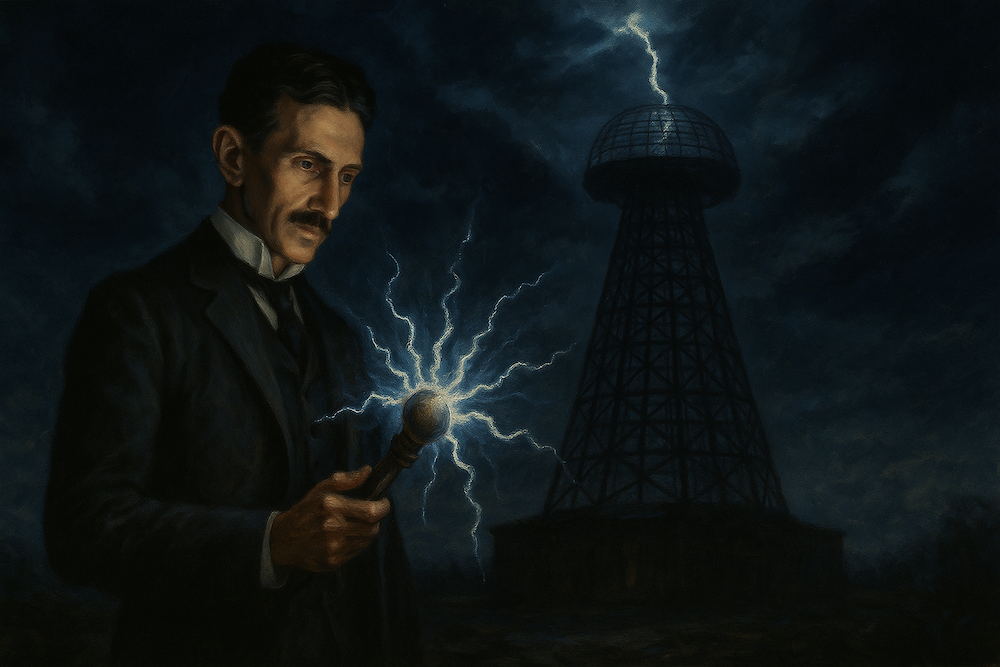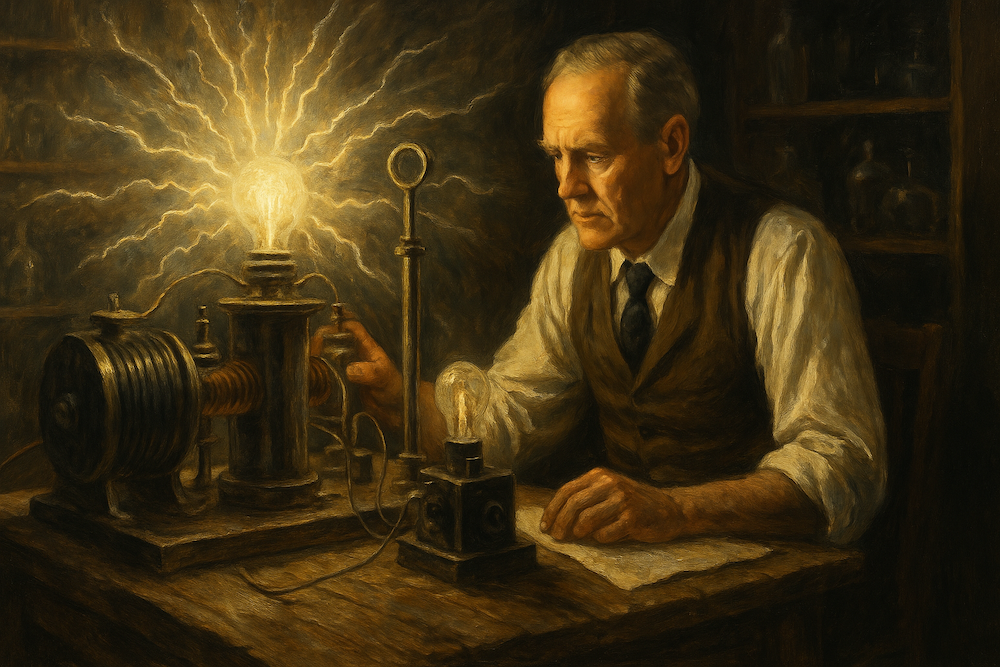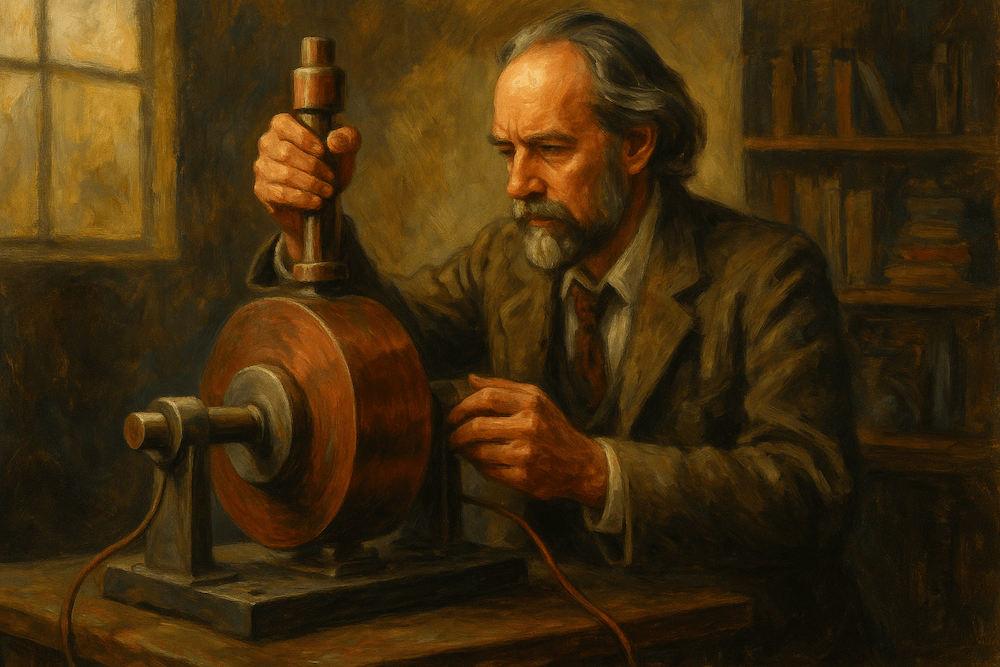The promise of unlimited, cost-free energy has captivated inventors and the public for over a century, spawning countless claims of revolutionary devices and persistent theories about their suppression. **The scientific evidence overwhelmingly demonstrates that such devices violate fundamental laws of physics and are impossible to construct**. More importantly, careful investigation reveals that the inventors behind these claims lived ordinary lives and died natural deaths, contradicting dramatic narratives of suppression and mysterious disappearances. While legitimate concerns exist about corporate influence in energy markets, the facts show that breakthrough energy technologies follow established research pathways rather than emerging from garage workshops only to be buried by shadowy forces.
This phenomenon represents a fascinating intersection of scientific misunderstanding, psychological needs, and economic anxiety. Understanding both the scientific impossibility of these devices and the very human reasons why people believe in them offers valuable insights into how science, technology, and society interact in an age of rapid change and information abundance.

The inventors and their extraordinary claims
The pantheon of "free energy" inventors includes several figures whose stories have become deeply embedded in alternative energy folklore. **Nikola Tesla**, the most famous among them, developed revolutionary alternating current systems and held over 300 patents throughout his documented career. His wireless energy transmission experiments at Wardenclyffe Tower captured public imagination, though the project never achieved practical results and was abandoned due to financial difficulties in 1906.
**Thomas Henry Moray** claimed in the 1920s and 1930s to have developed a "radiant energy device" capable of producing 50,000 watts without external power input. Multiple witnesses reportedly observed demonstrations of his device, and he eventually received a patent for an electrotherapeutic device in 1949, though notably never received patent approval for his claimed free energy system.
**Bruce DePalma**, who taught physics at MIT for 15 years, developed what he called the "N-machine" – a homopolar generator he claimed could produce five times more energy than it consumed. His work culminated in the "Sunburst" machine in 1978, and a Stanford professor's 1986 independent test found unusual results, though most scientists remained skeptical.
**Adam Trombly** co-designed a "Closed Path Homopolar Generator" with Joseph Kahn in 1980, claiming efficiency ratings exceeding 250%. He obtained an international patent for the device and reported third-party verification of his claims from researcher Paramahamsa Tewari in India.
These inventors shared common characteristics: legitimate technical backgrounds, patents for related devices, and passionate advocacy for their revolutionary energy technologies. Their stories have inspired generations of amateur inventors and conspiracy theorists, but the documented facts about their lives and deaths tell a very different story than the dramatic narratives that have grown around them.

The science behind the impossible
The fundamental reason these devices cannot work lies in the **laws of thermodynamics**, which represent some of the most thoroughly tested and validated principles in all of science. The first law, conservation of energy, states that energy cannot be created or destroyed – only converted from one form to another. Every proposed free energy device claims to output more energy than it receives as input, directly violating this principle.
The second law of thermodynamics adds another insurmountable barrier: entropy in isolated systems always increases over time. This means that any energy conversion process will inevitably produce waste heat, making 100% efficiency impossible, let alone the greater-than-unity efficiency claimed by free energy advocates.
**The American Physical Society**, representing over 50,000 physicists worldwide, has issued an explicit statement: "The American Physical Society deplores attempts to mislead and defraud the public based on claims of perpetual motion machines or sources of unlimited useful energy unsubstantiated by experimentally tested established physical principles."
The specific physics principles behind claimed devices reveal additional impossibilities. Homopolar generators, the basis for many claims, are legitimate electromagnetic devices that convert rotational mechanical energy to electrical energy through electromagnetic induction. However, the energy output always comes from the mechanical energy used to spin the device. Claims of over-unity performance ignore the energy required to overcome magnetic braking forces, resistive losses in conductors, and the fundamental principle that all output energy must come from the rotating energy source.
**Zero-point energy**, often invoked to explain free energy claims, represents a real quantum mechanical phenomenon – the minimum energy retained by quantum systems even at absolute zero temperature. However, this energy exists in the ground state of quantum systems and cannot be extracted for useful work. As quantum field theorists explain, vacuum energy represents the lowest possible energy state of a system, making extraction impossible without violating conservation laws.
Current legitimate energy research focuses on improving conversion efficiencies and developing new materials within established physical principles. **National laboratories are achieving remarkable breakthroughs**: the National Ignition Facility achieved net energy gain from fusion reactions in 2022, private companies are developing advanced battery technologies, and renewable energy systems are incorporating AI optimization. These advances follow predictable research-to-commercialization pathways involving peer review, replication, and gradual scaling – not the dramatic claims and secrecy that characterize free energy stories.
What really happened to the inventors
Contrary to persistent claims of mysterious deaths and systematic suppression, **careful investigation reveals that these inventors lived ordinary lives and died natural deaths**. The documented evidence provides a sobering contrast to the dramatic narratives that have grown around their stories.
**Nikola Tesla died on January 7, 1943, at age 86** in room 3327 of the Hotel New Yorker in Manhattan. The Assistant Medical Examiner confirmed the cause of death as coronary thrombosis – a heart attack. Tesla had been in declining health since being struck by a taxi in 1937, suffering broken ribs and back injuries from which he never fully recovered. He lived alone, refused medical treatment, and was found by hotel maid Alice Monaghan after ignoring "do not disturb" signs for two days. No evidence of foul play exists in the extensive medical and police documentation.
**Thomas Moray died May 18, 1974, at age 81** from what appears to be natural causes with no suspicious circumstances documented. While Moray did face one verified incident of suppression – a Rural Electrification Administration engineer reportedly destroyed his device with an axe in 1944, an event documented in congressional hearings – this isolated incident hardly constitutes the systematic suppression often claimed.
**Bruce DePalma's death in October 1997** was tragically mundane: internal bleeding related to documented alcohol and substance abuse problems that had plagued him since the 1960s. Colleague Toby Grotz confirmed that DePalma died of health complications from substance abuse. Ironically, he died weeks before a scheduled test of his final N-machine, which subsequently failed to demonstrate any over-unity results, providing definitive proof that his claims were unfounded.
**Adam Trombly appears to still be alive**, contradicting claims that he was silenced or eliminated. While he alleges Pentagon gag orders and imprisonment threats, no documentation of these claims exists in government or court records, making them unsubstantiated allegations.
The pattern is clear: these inventors died from heart attacks, old age, or health complications related to personal issues, not from systematic suppression. The only documented case of actual suppression involved the destruction of Moray's device by a government engineer, which was openly acknowledged in congressional hearings rather than covered up.

Patent suppression myths versus documented reality
The U.S. patent system's approach to free energy claims follows well-established legal procedures rather than shadowy suppression campaigns. **The USPTO explicitly rejects perpetual motion machine applications** under the utility requirement of patent law, as codified in the Manual of Patent Examining Procedure. These rejections occur through normal legal processes with full appeal rights – not through secretive suppression.
However, legitimate national security patent secrecy does exist through the Invention Secrecy Act of 1951. **As of fiscal year 2024, 6,471 active secrecy orders** restrict patent applications deemed potentially detrimental to national security. These orders are imposed by agencies including the Department of Defense, Department of Energy, and National Security Agency, and they undergo annual review with established legal procedures for appeal and compensation.
The categories of restricted technologies focus on genuinely sensitive areas: nuclear-related inventions, cryptographic systems, dual-use technologies with military applications, and advanced computing systems. Energy patents can be classified, but typically involve nuclear reactor designs, uranium enrichment processes, or energy storage systems with clear military applications.
**The distinction between normal patent rejection and suppression is crucial**. Patent examiner rejections for violating thermodynamic laws represent standard technical review processes, while national security classifications follow established legal frameworks with congressional oversight and judicial review. Academic research reveals limited evidence of systematic energy patent suppression beyond these documented legal mechanisms.
Several court cases provide insight into how the system actually works. In Damnjanovic v. U.S. Air Force (2014-2015), inventors received $63,000 compensation for a secrecy order on anti-missile technology, demonstrating that the legal system provides remedies when inventors' rights are affected. Similarly, historical nuclear patents were classified and inventors received delayed compensation through established legal processes.
The reality is that suppressing viable energy technologies would be economically counterproductive for government interests, as energy security represents a national priority and breakthrough technologies would provide competitive advantages in global markets.
The psychology and economics of persistent belief
The persistence of free energy conspiracy theories despite overwhelming scientific evidence reveals fascinating insights into **human psychology and social dynamics**. These beliefs serve important psychological functions: they provide a sense of special knowledge, offer simple solutions to complex problems, and create communities of shared identity and purpose.
Research shows that conspiracy theories become more appealing during periods of uncertainty and social disruption. The complexity of energy systems, combined with legitimate concerns about climate change and energy costs, creates fertile ground for too-good-to-be-true solutions. **Social media amplifies these effects** through echo chambers and algorithmic systems that prioritize engaging content over accurate information.
The economic context adds another layer of complexity. Global energy markets represent hundreds of billions of dollars in annual trade, creating genuine incentives for companies to protect market positions. However, this economic reality cuts both ways: while incumbent companies may resist disruptive technologies, the enormous potential profits from breakthrough energy innovations create powerful incentives for development and commercialization.
**Legitimate energy innovation today involves massive public and private investment** in fusion research, advanced batteries, renewable energy systems, and artificial intelligence optimization. The International Thermonuclear Experimental Reactor (ITER) represents the world's largest scientific collaboration, while private companies like Microsoft have signed billion-dollar deals for future fusion power. These developments follow transparent research pathways involving peer review, international cooperation, and staged development processes.
The contrast with free energy claims is striking: legitimate breakthroughs involve teams of scientists, published research, and reproducible results, while free energy devices typically emerge from individual inventors making extraordinary claims without independent verification.
Corporate influence and real energy politics
While systematic suppression of breakthrough technologies lacks credible evidence, **legitimate concerns exist about corporate influence in energy markets and policy**. Large energy companies invest heavily in political lobbying, and the "revolving door" between industry and government creates potential conflicts of interest. Research documents that corporate lobbying efforts can be more effective for large firms than small ones, and energy sector companies make substantial political contributions.
However, the economic logic of suppression breaks down under scrutiny. Energy companies are actively investing in renewable energy, fusion research, and alternative technologies because they recognize the long-term trends toward decarbonization and energy transformation. **Major oil companies now have substantial renewable energy divisions** and are competing to develop breakthrough technologies rather than suppress them.
The real energy politics involves complex negotiations over transition timelines, infrastructure investments, workforce retraining, and international competitiveness. Governments and companies are grappling with how fast to transition away from fossil fuels while maintaining energy security and economic stability. These legitimate policy debates occur in public forums through established political processes, not through conspiracies to suppress revolutionary technologies.
**Current energy innovation demonstrates how breakthrough technologies actually emerge**: through substantial public and private investment, international collaboration, staged development processes, and gradual scaling. The National Ignition Facility's achievement of fusion energy gain resulted from decades of research, billions of dollars in investment, and teams of scientists working transparently within established scientific institutions.
Lessons for science, society, and energy futures
The free energy phenomenon offers valuable lessons about the intersection of science, psychology, and society in an age of rapid technological change. **The persistence of these beliefs despite scientific impossibility** highlights the importance of scientific literacy, but also reveals that facts alone are insufficient to counter deeply held beliefs that serve important psychological and social functions.
Effective responses require addressing both the factual claims and the underlying human needs that conspiracy theories serve. This means improving scientific education while also working to rebuild social trust, address economic inequality, and create inclusive pathways for public participation in energy decision-making.
**The real energy revolution happening today** involves fusion breakthroughs, advanced battery technologies, renewable energy scaling, and AI-powered optimization systems. These developments follow established scientific and economic pathways: research, peer review, demonstration, and commercialization. They involve transparent international cooperation, massive public and private investment, and gradual scaling processes that take decades to reach full potential.
Understanding why free energy conspiracy theories persist – and why they're scientifically impossible – provides insight into broader challenges facing science communication and public policy in technological societies. The solution isn't simply debunking false claims, but building more trustworthy, transparent, and equitable institutions that give people genuine agency in shaping their energy future.
The inventors behind free energy claims were often sincere individuals pursuing extraordinary goals with limited understanding of fundamental physical principles. Their stories serve as reminders that good intentions and technical skill are insufficient substitutes for rigorous scientific methodology and peer review. While their dreams of unlimited clean energy remain unrealistic, the goal itself – abundant, clean, affordable energy for all – continues to drive legitimate scientific research and technological development around the world.
Conclusion
The investigation into free energy machines and their inventors reveals a clear pattern: **the devices violate fundamental laws of physics and cannot work as claimed, while the inventors themselves lived ordinary lives and died natural deaths**. Claims of systematic suppression lack credible supporting evidence, though legitimate concerns exist about corporate influence in energy markets and normal patent processes that reject scientifically impossible inventions.
The persistence of these beliefs despite overwhelming contrary evidence illuminates important truths about human psychology, social media dynamics, and the challenge of maintaining scientific literacy in complex technological societies. Rather than dismissing believers as simply misinformed, society must address the underlying needs that these theories serve while working to build more trustworthy, transparent, and inclusive energy systems.
**The real energy revolution** involves fusion breakthroughs, advanced materials science, renewable energy integration, and AI optimization – technologies that follow established research pathways and respect fundamental physical principles. These developments offer genuine hope for abundant, clean energy while demonstrating how legitimate innovation actually works: through collaboration, peer review, substantial investment, and gradual scaling over decades.
The stories of Tesla, Moray, DePalma, and others serve as both cautionary tales about the seductive power of revolutionary claims and reminders of the human desire to solve humanity's greatest challenges. While their specific approaches were scientifically flawed, their goal of abundant clean energy remains a worthy aspiration that continues to drive legitimate research and development around the world.
